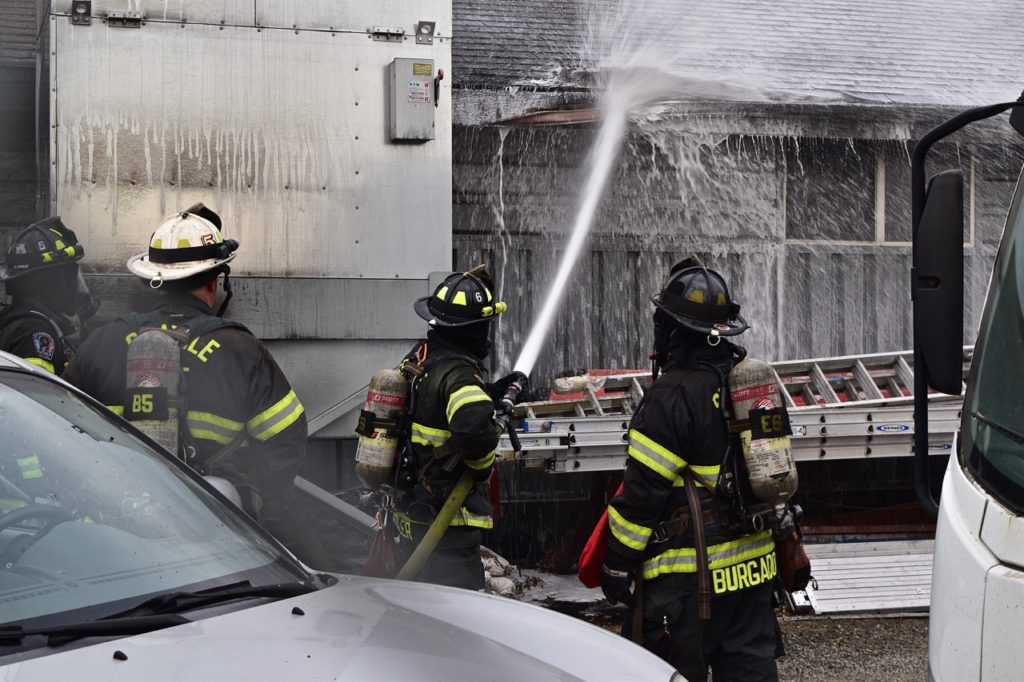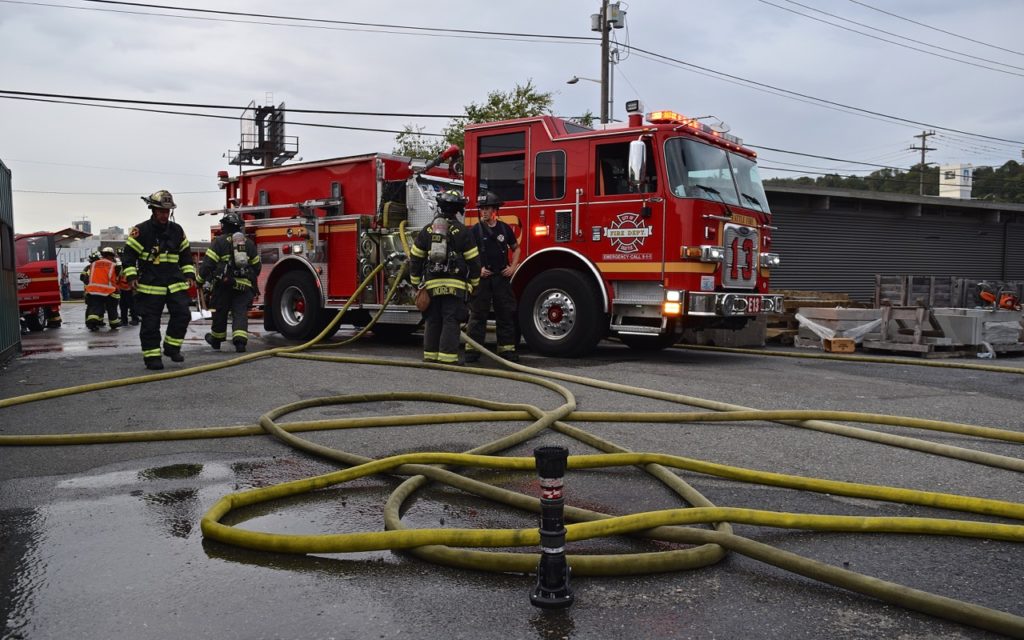
SEATTLE — At 6:42 p.m., our Fire Alarm Center received calls reporting a fire at the 700 block of Lander St. Engine 13 was first on scene and confirmed an exterior fire on the west side of a commercial warehouse that had already extended inside and up into the exposed rafters. Crews from Engine 13 worked quickly to put water on the fire while Rescue 1 gained access inside the warehouse to conduct a primary search. Ladder 3 arrived shortly thereafter and climbed onto the roof to cut holes to provide ventilation.
At 6:59 p.m., Battalion 5 upgraded the response to a 2-alarm fire requesting more resources to prevent the fire from spreading to nearby structures. Ten minutes later, crews had the fire under control and completed a primary search confirming no occupants were inside the building.
At 7:24 p.m., the fire was knocked down and crews transitioned to overhaul to check for hot spots. At the height of the incident, more than 70 firefighters were dispatched.
Fire investigators determined the incident was accidental and likely caused by improperly discarded oily rags. Estimated loss is $100,000.

Safety message:
Oils commonly used in oil-based paints, stains and varnishes release heat as they dry. A pile of oily rags can be dangerous because as they dry, the heat is trapped and builds up to potentially cause a fire.
Here are a few safety tips for storing wet, oily rags:
- Never leave cleaning rags in a pile. At the end of the day, take the rags outside to dry.
- Hang the rags outside or spread them on the ground. Weigh them down. Do this so they do not blow away. Make sure they are not in a pile. Keep them away from buildings.
- Put dried rags in a metal container. Make sure the cover is tight. Fill the container with a water and detergent solution. This will break down the oils.
- Keep containers of oily rags in a cool place. Keep them out of direct sunlight. Keep them away from other heat sources. Check with your town for information on disposing of them.
Vapors from flammable and combustible liquids can also ignite, causing a fire. Many commonly used flammable liquids include gasoline, lacquers and nail polish while common combustible liquids include paint thinner, oil-based paints and stains.
Safety tips for storing flammable or combustible liquids:
- Flammable and combustible liquids should not be used near an open flame. Do not smoke when working with these liquids.
- If you spill liquids on your clothing, remove your clothing and place it outside to dry. Once dry, clothing can be laundered.
- Keep liquids in their original containers. Keep them tightly capped or sealed. Never store the liquids in glass containers.
- Use gasoline only as motor fuel. Never use it as a cleaner. Never use it to break down grease. Never bring gasoline indoors, even in small amounts.
- Store gasoline ONLY in a container that is sold for that purpose. Make sure the container is tightly capped when not in use. NEVER store gasoline containers in a basement or in the occupied space of a building. Keep them in an outbuilding, a detached garage, or a shed outdoors.